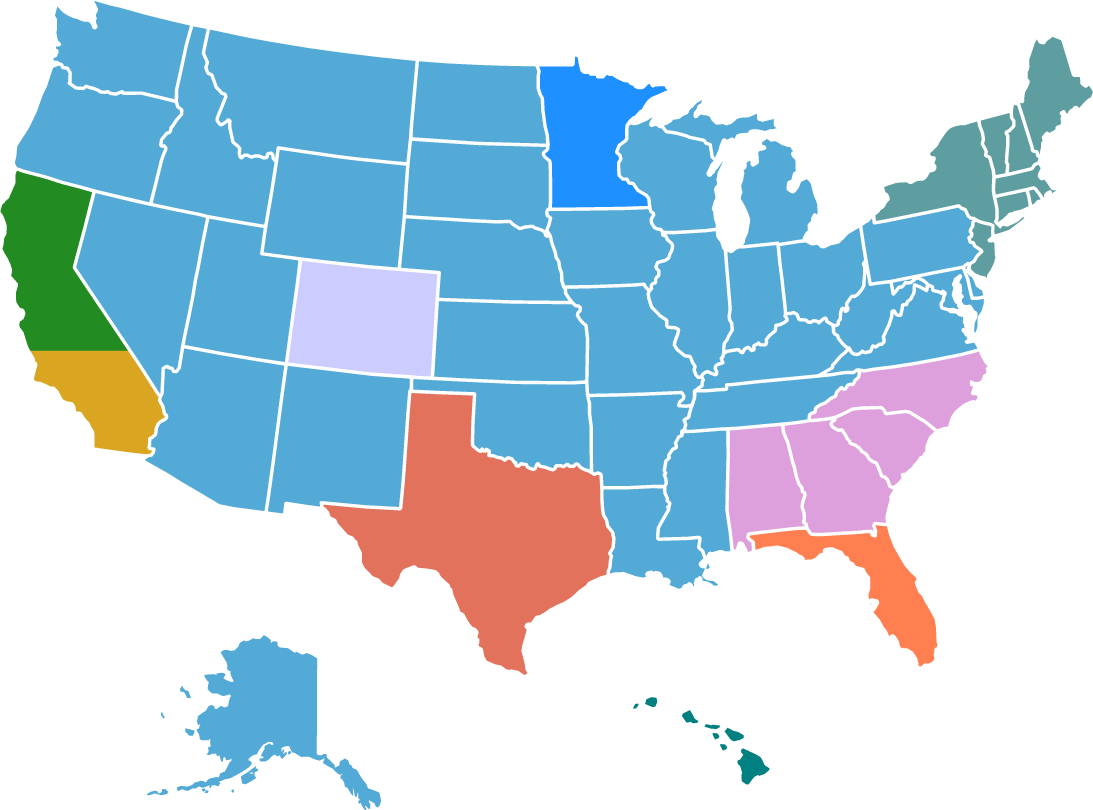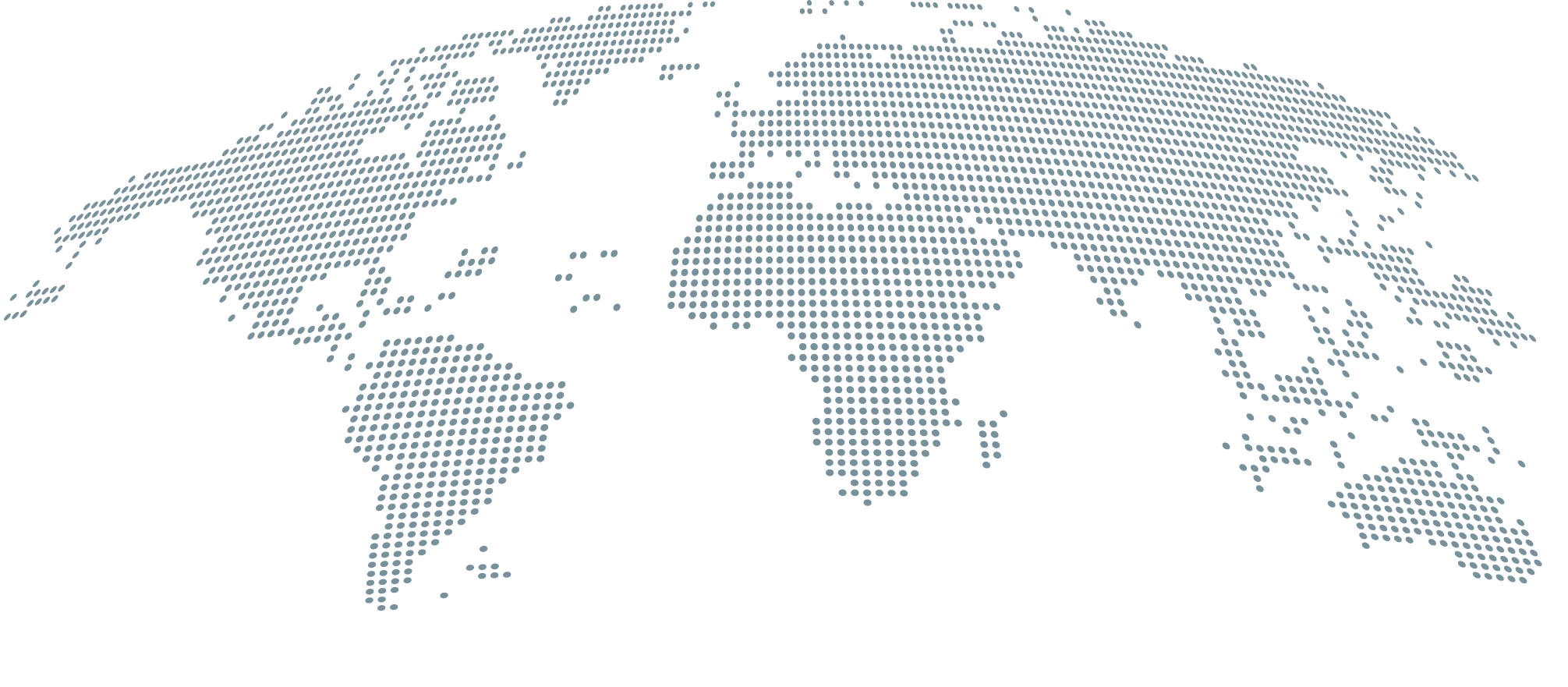Q: What is fire-resistive glass?
A: Fire-resistive glass is engineered to withstand fire, preventing the spread of flames, smoke, and radiant heat for a set period. It is typically used to compartmentalize fire and provide life safety in buildings. The materials and glass are designed to absorb heat, preventing it from transferring to the non-fire side, and it remains intact under high temperatures. This means that occupants and critical areas are better protected during evacuation or containment procedures. A system offers limited protection if it can block only flames smoke but still allows significant heat to pass through. Studies have demonstrated that combustible materials can spontaneously ignite due to the heat transmitted by non-barrier systems.
Q: How does fire-resistive glass differ from fire-protective glass?
A: Fire-resistive glass provides higher protection than fire-protective glass. While fire-protective glass can only block flames and smoke, fire-resistive glass also blocks the transfer of radiant heat and maintains its structural integrity for extended periods during a fire.
Q: What are the ratings available for fire-resistive glass?
A: Fire-resistive glass is rated by the time it can resist fire, typically 45, 60, 90, and 120 minutes. The rating is determined through standardized tests that evaluate the material’s ability to maintain its integrity and insulation properties. These ratings indicate how long the glass can maintain its integrity and thermal barrier during a fire, as certified by testing agencies.
Q: How does fire-resistive glass prevent the spread of fire?
A: Fire-resistive glass is made from multiple layers of heat-absorbing materials or can be made through two panels of glass sandwiched together by a specialized gel to absorb heat. This gel or layers expand and turn opaque when exposed to fire, creating a barrier that blocks the spread of flames, smoke, and radiant heat.
Q: Where should fire-resistive glass be installed in a building?
A: Fire-resistive glass is typically used in areas that require a fire-rated partition, such as stairwells, corridors, atriums, and areas separating different fire zones. It can also be used in doors, walls, windows, and curtain wall systems where fire protection is required by code.
Q: Does fire-resistive glass need a special frame?
A: Yes. Fire-resistive glass systems require special frames made from fire-resistant materials like steel or aluminum that have been tested and certified for use in fire-rated applications. Using the glass and installing into anything less than a steel or aluminum fire-rated frame will expose the frame (such as hollow metal) to exposed flames, smoke, and radiant heat.
Q: Can fire-resistive glass be used in exterior applications?
A: Yes, fire-resistive glass can be used in exterior applications, especially where building codes require fire resistance on the building envelope. Some products are specifically designed for both fire and weather resistance. Due to the sensitivity of outside heat and UV rays, a special IGU is added to the glass to provide a barrier to the glass, keeping the glass protected from these elements.
Q: Is fire-resistive glass transparent like regular glass?
A: While it is important to note that not all fire-resistive glass is the same, we have come a long way in the last 2 decades where Tecfire’s T-Flame fire-resistive glass systems are transparent and look similar to regular glass, offering clear views while maintaining fire safety. However, fire-resistive glass may turn opaque when exposed to heat.
Q: How long does fire-resistive glass last before it may need to be replaced?
A: Fire-resistive glass does not typically have an expiration date. As long as it is not damaged or compromised, it can last for the lifespan of the building. Routine inspections are required to ensure it remains in proper condition.
Q: What tests are used to certify fire-resistive glass?
A: Fire-resistive glass undergoes standardized tests like ASTM E119 and UL 263 and NFPA 80 to assess its performance in fire scenarios. These standards ensure the glass can withstand high temperatures for the designated time period and, in some cases, the rigors of hose stream testing. These tests simulate real-world conditions to measure how well the glass can contain a fire and prevent heat transfer. These systems are commonly required in areas like stairwells, egress paths, and atriums, as defined by local and international building codes.
Q: Is there a maximum temperature that fire-resistive glass can withstand?
A: Fire-resistive glass is designed to withstand temperatures exceeding 1000°F for up to 120 minutes, depending on its fire rating. The performance under such temperatures is tested and certified during standard fire testing procedures.
Q: Can fire-resistive glass be used in overhead glazing or skylights?
A: Tecfire does have systems for overhead glazing and skylights. Contact us to learn more about these systems and when they may be available in North America. These must be specially designed and tested for horizontal applications to ensure they maintain their fire-resistive properties under extreme heat.
Q: Can fire-resistive glass be used in combination with other types of glazing?
A: Tecfire’s fire-resistive glass systems can incorporate features like thermal insulation, low-emissivity (Low-E) coatings, and laminated layers for additional safety or acoustic control. However, all combinations should be tested to ensure they maintain the necessary fire rating.
Q: What are the building code requirements for fire-resistive glass?
A: Building codes like the International Building Code (IBC) specify where fire-resistive glass must be used based on the location, height, and occupancy type of the building. Requirements vary by country and region, so it’s important to consult local regulations.
Q: How is fire-resistive glass installed?
A: Fire-resistive glass must be installed according to the manufacturer’s instructions and relevant building codes. Installation should be done by certified professionals to ensure that the system works as intended in the event of a fire.
Q: What Care & Maintenance is required for fire-resistive glass systems?
A: Regular inspections are necessary to ensure fire-resistive glass is in good condition. Any damage, cracks, or compromised seals should be addressed immediately. Routine cleaning, similar to standard glazing, can be done without compromising fire performance.
Q: Is fire-resistive glass more expensive than regular glass?
A: Yes, fire-resistive glass is generally more expensive due to its specialized design and manufacturing process which is engineered intricately to withstand the dangers of fire. It provides critical life safety and property protection benefits that justify the cost, especially in high-risk areas.
Q: Can fire-resistive glass be customized or tinted?
A: Yes, fire-resistive glass can be customized with different tints, patterns, or even laminated with decorative layers, but final design and verification should be approved by Tecfire to ensure warranty is unaffected. Any customization should be verified to ensure it does not affect the fire-resistance properties.
Q: What is the maximum size available for fire-resistive glass panels?
A: The size of fire-resistive glass panels depends on the specific product and its fire rating. Our spec guides provide maximum dimensions, which can range from smaller panels for doors to large, floor-to-ceiling glass walls. Check out our product pages to learn more.
Q: How does fire-resistive glass contribute to building sustainability?
A: Fire-resistive glass can be part of sustainable building strategies, as it can be combined with energy-efficient features like thermal insulation and daylighting. Many of our products are also made with recyclable materials, contributing to green building certifications.
Q: Can fire-resistive glass be used in historical buildings?
A: Yes, fire-resistive glass is often used in historical buildings to upgrade fire safety without compromising the building’s aesthetic. Fire-resistive glass is highly versatile and can be incorporated into designs that prioritize aesthetics, allowing for expansive glazing solutions without sacrificing fire safety. With slim profiles and various framing options, it enables modern, open design concepts. We are experienced and as a company originating in Europe, we also have a lot of experience working in historical buildings. Tecfire offers custom solutions that blend seamlessly with historical architecture.
Q: Can fire-resistive glass systems be used for exterior glazing?
A: Yes, fire-resistive glass systems can be used in exterior applications, particularly in buildings where code requires fire protection from adjacent structures or for specific zones of the building envelope. Some products also offer additional weatherproofing. See our more detailed product pages to see which systems are also suitable and certified for exterior applications.
Q: What happens to fire-resistive glass after a fire?
A: After a fire, fire-resistive glass should be inspected for damage. Even if it has performed its function during the fire, the glass should be replaced if it has been compromised or weakened.
Q: Is there a difference between fire-rated glass and fire-rated walls?
A: Yes. While both fire-rated glass and fire-rated walls serve the same purpose of preventing fire spread, fire-rated glass offers the added benefit of transparency, allowing natural light and visibility between spaces while maintaining fire safety.
Q: Can fire-resistive glass systems contribute to soundproofing?
A: Yes, fire-resistive glass systems can also provide soundproofing, especially when combined with laminated layers designed to block noise. This makes them suitable for applications where both fire safety and acoustic control are needed. Check out our product pages for more detail on db values.
Q: How is fire-resistive glass tested for radiant heat transfer?
A: Fire-resistive glass is tested for radiant heat transfer by exposing it to high temperatures and measuring how much heat passes through the glass. This is done in coordination with a testing lab which is certified by Intertek. Products with higher ratings prevent significant heat transfer, protecting people and materials on the other side.
Q: What is the difference between hose stream testing and fire-resistance testing?
A: Hose stream testing assesses the durability of fire-rated materials after exposure to high heat by blasting them with water to simulate firefighting efforts. Fire-resistive glass must pass both fire-resistance and hose stream tests to be fully certified for specific applications.
Q: Can fire-resistive glass be retrofitted into existing buildings?
A: Yes, fire-resistive glass can often be retrofitted into existing buildings to improve fire safety. However, the feasibility of retrofitting depends on the structural integrity of the current openings and compliance with local building codes.
Q: Are there any special certifications for installers of fire-resistive glass?
A: We recommend installers to be certified to ensure that fire-resistive glass is properly installed. We work closely with glaziers to help them before, during, and after installation. However, check with your local regulators and state requirements.
Q: Why are fire-resistive systems more expensive than fire-protective systems?
A: Fire-resistive systems can be more expensive than fire-protective systems for a number of reasons, including:
Fire-resistant glass, for example, is made with interlayers that increase its thickness and fire-resistant properties. These interlayers need to be either laminated with other glazing components or filled with a clear hydrogel, which can increase the cost and weight of the glass.
The additional weight of fire-resistant glass may require more robust, fire-rated frames.
The cost of a fire-resistive system can be determined by the size of the system and the historic complexity of the installation. However, with Tecfire, in many regions of the world, installers of Tecfire systems are Tecfire team members. As such, our installers have provided significant insight into methods that make the installation easier. We believe our experience provides the benefit to local glaziers installing our systems. We’ve been told our system install time can be 10 – 20% under the installation time of competing systems.
Fire-Resistive technology performs in extreme conditions. The craftsmanship and engineering alone are more expensive. The fact is, fire-resistive technologies can save lives, whereas fire-protective has a more limited scope in protection.
Q: What benefits are there to using fire-resistive systems?
A: Fire-resistive systems can provide several benefits, including:
Q: For exit enclosures/stairwells, can I use fire-protective glass in large sizes when there are sprinklers?
A: The largest issue with using fire-protective glass is the size. The IBC codes limit panels to under 100 square inches if using fire-protective glass alongside a fire-resistive door, making it nearly impossible to use anything other than fire-resistive glass panels.
You would be able to use fire-protective glass when the door also uses fire-protective, which IBC does allow when the exit is fully sprinkled.
Under the 2012, 2009 and 2006 IBC, fire protective glazing is not allowed in the sidelights, transoms and openings surrounding the 60-minute door, whether the building is fully sprinklered or not. The glazing must be fire resistive and rated equal to the wall.
Q: Do you ship fire-rated sealants as part of the materials delivered?
A: Due to the risk of reactions within the chemical makeup of sealants, we do not provide the sealant. Instead, we recommend a number of sealants to choose from. Among them are Dowsil Firestop 700 sealant, DAP fire stop silicone sealant, Pyroplex fire-rated silicone sealant, and Hilti CFS-S SIL GG Firestop silicone sealant.
Q: What is the max glass size for a storefront, curtainwall, or doors?
A: Detailed information on each product can be found in the product page for each type of system. There are some unique qualities dependent on the overall structure.
Q: Can fire-resistive glass help with LEED or other green building certifications?
A: Yes, our systems can contribute to LEED points and other green building certifications, particularly when integrated with energy-efficient glazing options. These systems can enhance daylighting, reduce energy consumption, and provide sustainable safety solutions.
Q: How are the materials shipped and can my fire-rated glass be in the rain during the delivery process?
A: During the delivery process, the systems will be shipped in a container for either air or by sea shipment. Once the systems are delivered, they need to be stored in a client-controlled environment. The glass can be temperamental to temperatures without them being installed into the frame systems. Delivering in the rain should not have an impact on the glass.
Q: Does ceramic fire-rated glass with the same rating (in minutes) perform the same as laminated glass?
A:
Q: Can hardware be substituted?
A: All hardware substitutions must be carefully reviewed to ensure compliance with listing requirements and compatibility with our narrow stile design. Please refer to the standard hardware schedules in our data sheets or contact us directly for precise guidance on allowable modifications.
Q: How experienced is Tecfire?
A: Tecfire began in 1985, this is around the time when fire-rated glass just started transforming to wired glass into more transparent systems. Tecfire was there from the beginning of this trend change, and in fact, drove this change in Europe. Tecfire even played a pivotal role in developing fire tests.
We have worked with some of the worlds most renown architects on projects such as the Louve Museum, Yas Marina Fi, and Madrid Airport, among many other train stations, and airports. We have worked with clients such as Apple, Mastercard, and Aecom.
Q: What makes Tecfire different?
A: Tecfire began in Spain before spreading out around the globe. Getting our start in Europe gave us opportunities to develop apart from some of the other start-ups in the USA. We didn’t use a template, instead, developing our framing systems as thinner profiles, showing more glass and less framing and less visible hardware. In addition to our performance and quality, we are known for the beauty of our systems, which we are proud to put up against anyone.
Q: What are your delivery times?
A: Depends on the project size, but we are typically seeing projects arrive to the construction site in the US in 10-14 weeks from the date of order. Be sure to check with your local Rep or call us for estimated times for specific projects.
Q: Are you a USA company?
A: Tecfire is established globally in different regions. In the US, we are headquartered near Indianapolis, Indiana, with our sales, marketing, and engineering all central to our team. We are registered as a corporation in the USA.
Q: Where do you manufacture?
A: For the US market, our current manufacturing is completed in Spain. Our supply chains come from Europe and the USA, and our long-term vision is to set up a facility in the United States.
Q: Are your products approved for the North American market?
A: Yes, all products we offer for sale in North America have passed all certification and testing requirements per Intertek testing and documentation.
Q: Does Tecfire install?
A: While we work with glaziers and general contractors to support the final delivery and installation, Tecfire is strictly the supplier of the systems.
Q: How do I get in touch?
A: Glad you asked and we would be honored to speak with you. Send us an email at info@tecfire.com or call us at 1-833-TECFIRE
Q: What if my systems have an issue?
A: Tecfire offers the longest warranty in the industry of 10 years. If our products have any quality defects or performance failures, we will replace it free of charge. Refer to our warranty guidelines posted on our site here. If you have any issues give us a call.
Q: How often should Tecfire systems be inspected?
A: We recommend our glass and systems should be inspected regularly as part of a building’s fire protection system. While the glass itself doesn’t have a set expiration date, damage to the glass or frame should be addressed immediately to ensure continued fire safety.
Have more questions about Tecfire, or fire rated glass and framing? Send them to info.na@tecfires.com and our technical representative will be happy to assist you.
Global Expertise with Local Presence
Explore our local representatives by clicking on each location to access the latest product information and receive expert guidance.

NEW YORK, CONNECTICUT,
RHODE ISLAND, MASSACHUSETTS,
VERMONT, NEW HAMPSHIRE, MAINE,
NEW JERSEY: Hudson and Bergan

Martineau & Company
203-314-4688
nicole@mandcomp.com

![]() United States
United States
Headquarters & Warehouse
Address: 8414 Zionsville Rd., Indianapolis, IN. 46268
Phone: 1-833-TECFIRE
Email: info.na@tecfire.com
![]()
Saudi Arabia
Headquarters
Address: Palladium Center, Building S1, 1st Floor, Office No.- 2S1
Eastern Ring Road, Exit 16, 8834 Al Faruq Dist., Riyadh 4977-12863
Email: info@tecfire.com
Factory
Address: 6831 Al Mishael Dist., Unit No.24 Riyadh 14328–3859
Phone: +966 8001220021
Email: info@tecfire.com
![]() Dubai, UAE
Dubai, UAE
Regional Office
Address: E502 E-Wing, Dubai Silicon Oasis, P.O. Box: 341012
Phone: +971 4 372 4480
Email: info@tecfire.com
![]() Spain
Spain
Headquarters & Factory
Address: Pol. Industrial Sector 9, Calle Ventorrillo no. 1
Yuncler-CP: 45529, Toledo
Phone: +34 925 55 19 55
Email: info@tecfire.com
🌐 Visit Website

ALUMINUM | AluFire AS85
STEEL | SteelFire AS85
T-FLAME | Fire-Rated Glass
Disclaimer
The information provided in the Frequently Asked Questions (FAQ) section on this website is for general informational purposes only. Tecfire reserves the right to update, modify, or remove any content at any time without prior notice. While we strive to ensure the accuracy and relevance of the information presented, changes in products, specifications, policies, or procedures may occur. For the most up-to-date information, we recommend contacting Tecfire directly.